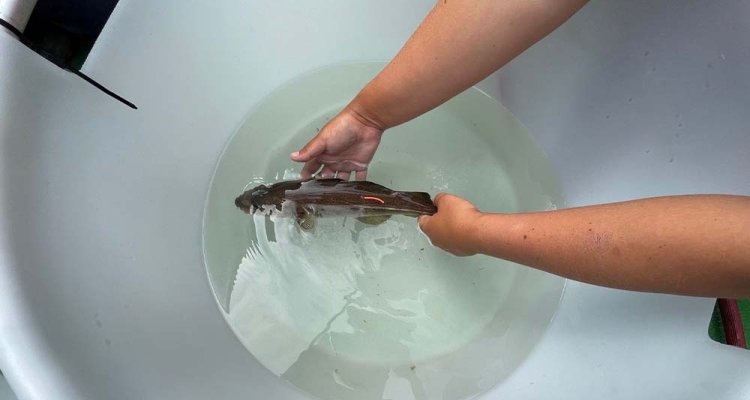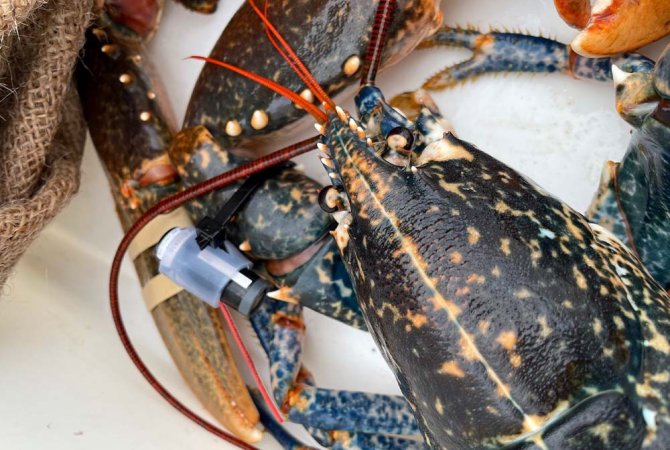
Interview
Fish behaviour around artificial reefs
Artificial reefs have the potential to increase biodiversity in offshore wind farms. They provide shelter to a range of marine life, such as fish and lobsters. Wageningen Marine Research is assessing the impact of artificial reefs, using cameras and acoustics.
In 2020, four artificial reefs have placed in the Borssele offshore wind farm. They are collections of concrete pipes, laid down by a crane from a large vessel. They form a testing ground for researchers such as Benoît Bergès of Wageningen Marine Research who are investigating whether such structures, which they call artificial reefs, can locally boost biodiversity.
“All kinds of animals seem to find these structures attractive,” says Bergès. “For example, they find shelter there as they are protected from fishing operations. The marine ecosystem is generally enhanced around such reefs.” The installation of artificial reefs is an example of nature-inclusive developments that could take place in and around wind farms in the future.
Swimming behaviour
Bergès and his colleagues fitted 45 young cods with small sound transmitters. These communicate with acoustic receivers placed around the reefs. Through this system, known as acoustic telemetry, individual fish can be tracked with a fine spatial and temporal resolution to assess behavioural changes. Cod fish have a reasonable site-fidelity, he explains, so they are not very likely to disappear quickly with their transmitters – although the data have not yet been retrieved: the loggers store the data locally and only disclose them when they are retrieved again, in the course of 2022.
“The transmitters register swimming movements, but also acceleration,” says Bergès. “If you compare the swimming behaviour with a data set from an environment without shelters, you can compare for example stress and energy expenditure. Our hypothesis is that the fish are calmer and waste less energy if they have access to hiding places. This might be beneficiary to spawning.”
Consortium
Wageningen Marine Research is conducting this research together with the operator of the Borssele offshore windfarm Ørsted, the Win-Wind consortium (part of the European Horizon-2020 programme) and foundation De Rijke Noordzee. “De Rijke Noordzee is an important partner as an NGO that investigates how offshore wind energy can help improve nature quality in the North Sea,” explains Bergès. “For example, by building artificial reefs.”
Cod, the biologist notes, is a key species in the ecosystem of the North Sea. Knowledge about the behaviour and preferences of this species can be used as an indicator of overall ecosystem health. “We are also investigating the behaviour of lobsters around the artificial reefs,” Bergès continues. “We have fitted about a dozen of them with transmitters. We also use underwater cameras and environmental DNA techniques to investigate biodiversity around the artificial reefs.”

Deterring fish
Another research project conducted in the context of offshore wind farms is the APELAFICO project, funded by NWO. This project investigates the effect of construction and operation of wind farms on pelagic fish communities. For this, Bergès and his colleagues use active acoustic devices, based on sonar, to image schools of fish. “We are investigating the size, composition and swimming behaviour of schools in and around wind farms,” he says. “We do this not only at existing wind farms, but also at construction sites.”
This research is not only intended to map the influence of wind farms on fish, Bergès emphasises. There’s also a direct application. The project is testing the efficacy of the FaunaGuard device, which temporily deters fish from a given area, for instance during construction. Berges: “Our research provides insights into the performance of the FaunaGuard, which can potentially lead to improvements in its design and use.”